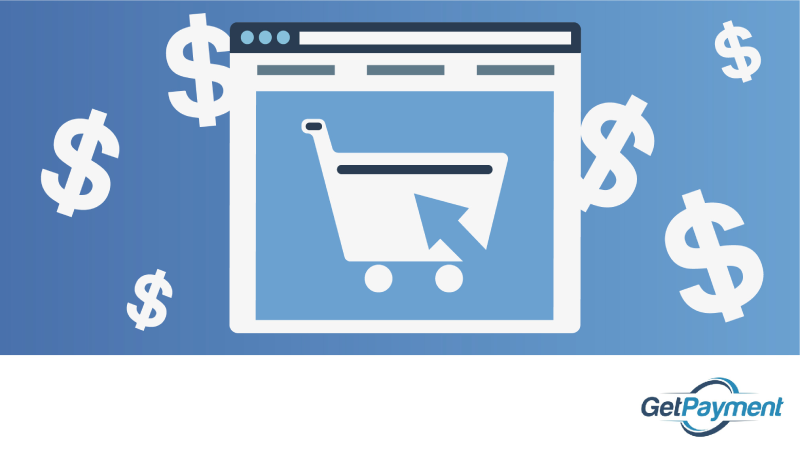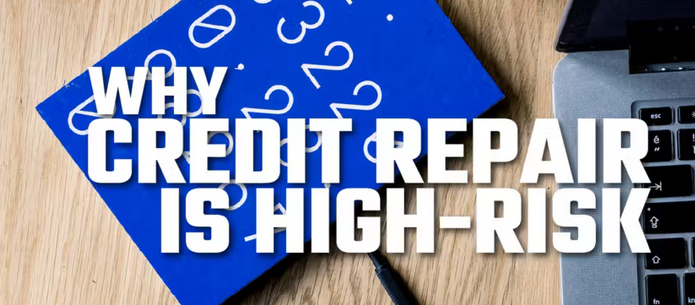In order to run a successful business online, you need a way to accept customer payments. So, one of the first things you need to do as an eCommerce merchant is to partner with a reliable merchant services provider (MSP) to create a dedicated eCommerce merchant account.
Otherwise, you won’t be able to accept customer payments through your website—which would make it pretty challenging to sell anything.
Looking to open an eCommerce merchant account but aren’t sure how to start? Keep reading to find out everything you need to know about merchant accounts, including what they are, why you need one, and how to set one up.
Soon, you’ll be able to process debit and credit payments online, validate customer card details to protect against fraud, and ensure your revenue makes it to your business account without a hitch.
What is an eCommerce Merchant Account?
First things first: what exactly is an eCommerce merchant account?
It’s important to note that an eCommerce merchant account is not the same thing as your standard business bank account. As a merchant, you’ll need both of these accounts to process card payments online.
An eCommerce merchant allows you to accept payments through your website, while your regular business account is where the funds end up once the transaction is fully processed.
Merchant accounts are typically managed by merchant services providers (MSPs), though they are also offered by some major banks.
As for how an eCommerce merchant account actually works? You can think of your merchant account as a holding pen or money depot. It’s where funds sit until the payment has been properly verified and approved, before being released into your bank account.
Why Does Your Business Need an eCommerce Merchant Account?
The simplest reason you need to open an eCommerce merchant account is that without one, you won’t be able to accept credit or debit card payments through your website.
But there’s a more complicated answer to this question that requires a basic understanding of what goes on behind the, ahem, screens after a customer buys something from your online store.
Between the moment a customer enters their card information and clicks “checkout” to the moment you see those funds turn up in your bank account, there is a ton of activity happening to make that transaction possible. In order to verify the card details and release payment into your bank account, there’s a series of security protocols and interactions occurring between the credit card networks, the issuing bank, the acquiring bank, and your eCommerce payment gateway.
Your merchant services provider (MSP) creates and manages your eCommerce merchant account to help orchestrate the communication that allows you to accept payments.

The Value of a Dedicated eCommerce Merchant Account for Secure, Reliable Payments
Whether or not you’re familiar with the inner workings of the payment processing industry, one thing to remember is this: eCommerce businesses require merchant accounts in order to accept online payments. So, if you’re selling anything online, you need an eCommerce merchant account to make it happen.
Furthermore, a dedicated eCommerce merchant account is more suitable for growing businesses than a shared merchant account. If you partner with GetPayment, we’ll create a dedicated merchant account for your business—so you’ll never have to worry about funds getting frozen due to spikes in growth or sales. This is the most secure and reliable way to accept customer payments online.
Creating an eCommerce Merchant Account: How to Do It
Alright, now that we’ve covered the basics of what an eCommerce merchant account is, let’s talk about how to actually get one set up for your business. Follow these simple steps to choose a suitable MSP, apply for a dedicated merchant account, and get your online store up and running.
Step 1: Deciding What You Need from Your eCommerce Merchant Account
Before you open an account or speak to a merchant services provider, think about what services you need from your eCommerce merchant account provider. Some of the basic necessities include a dedicated merchant account and a secure payment gateway to process online purchases—but there are a few other considerations to keep in mind.
- As an eCommerce merchant, one of your main priorities should be to ensure your merchant account integrates with your software and eCommerce platform. For example, if you currently run your store using Shopify or Magento, you need your merchant account to be compatible if you don’t want to get saddled with rebuilding your shop from scratch.
- Another consideration is where your core customers are located. For instance, do you sell on an international level? If so, you require international payment processing capabilities that allow you to sell to a global customer base. Some MSPs restrict their services to stores that only sell within the USA. So, it’s important to make sure your eCommerce merchant account supports payment processing in the countries and currencies you’re working with.
- How quickly do you want to get paid? Traditional ACH transfers take three or more business days from the time of purchase before you’ll see that money hit your account. If getting paid quickly is important to you (and especially if you’re looking reinvest in your business and grow more quickly), you should look for an MSP that can offer next-day funding (which is exactly what it sounds like—and at least 3X faster than ACH transfers!).
- Is your business strictly online—or do you also operate a brick-and-mortar location? If so, you should prioritize choosing an MSP that can support all of your operations with a payment gateway as well as appropriate hardware for in-store payments.
- Another factor to consider is whether your business is considered high-risk. Certain payment processors refuse to work with merchants in high-risk verticals or business models. In fact, Stripe prohibits high-risk merchants from using their services at all. If you fall into any of those categories, you’ll need to find an MSP that specifically supports high-growth and high-risk businesses.
Step 2: Comparing MSPs and Weighing Your Options
Not all eCommerce merchant accounts are created equal. So, when it comes to choosing the right eCommerce merchant account for your business, it’s important to find a partner that not only supports your practical business needs but also offers fair pricing, reliable service, and genuine care for your best interests.
You can follow this simple checklist to help you choose a trustworthy eCommerce merchant services provider:

Here’s a closer look at why these items are so important when choosing an MSP:
Flat-Rate Pricing
In the world of payment processing, there are several different pricing structures you might encounter; including flat rates, tiered rates, and fluctuating interchange rates. For eCommerce merchants, a flat rate is the simplest way to secure the services you need without worrying about unexpected charges showing up on your next bill.
Flexible Contract Terms
Be wary of rigid long-term contracts—and don’t skip over reading the fine print! An MSP with a strict cancellation can end up costing your business much more than expected if you need to change course. In most cases, your best bet is to choose an MSP that can offer a flexible contract. This ensures you aren’t locked into any specific contract, service volume, or provider—which means you can adjust your payment processing relationship easily as your business needs scale or change.
Secure Payment Gateway
A payment gateway is responsible for authorizing card transactions to allow customers to buy directly from your website. Suffice it to say, your payment gateway is critical to your ability to process online payment. Make sure your MSP can set up a secure gateway that supports the type of card payments you want to accept.
Reliable 24/7 Support
As someone who runs an online store, you know that technical glitches can mean lost revenue for your business. And as they say, the only thing worse than needing tech support in the first place is not being able to get in touch with tech support. That’s not something you should have to worry about, which is why GetPayment offers 24/7 customer support to all of our merchants.
Dedicated eCommerce Merchant Account
Some MSPs only provide shared or aggregate merchant accounts instead of setting up a specific dedicated merchant account for each client. A shared account means your funds are held in a shared account with other businesses; whereas a dedicated merchant account keeps your funds separate from other businesses.
This might seem like a small factor, but it can be an important distinction—especially for high-growth or high-risk eCommerce merchants. With a shared merchant account, you’re more likely to be penalized for chargebacks or spikes in volume. A dedicated merchant account, on the other hand, ensures your funds are protected and won’t be frozen, even if you experience rapid growth, high-value sales, or are deemed “high-risk.”
Step 3: Reaching Out to Apply for an Account
Once you find a full-service MSP you want to work with, it’s time to apply for an account. Make sure you share the details of what you’re looking for, including the list of must-haves you came up with when deciding what you want from your eCommerce merchant account. Be honest and open about your projected sales volume, what type of hardware or integrations you might need, and whether your business falls into a high-risk category.
Oh, and if you’re ditching your old payment processor in favor of a full-service MSP, be sure to disclose that information early in the conversation to make the process is as seamless as possible.
If you contact GetPayment, we’ll provide you with a free eCommerce merchant account analysis consultation—no strings attached. Our goal at this stage is to learn as much as we can about your business, your payment processing needs, and your growth goals. We’ll use this information to create a custom payment processing solution and create an application for your dedicated eCommerce merchant account.
Step 4: Getting Approved So You Can Start Accepting Online Payments
GetPayment will approve your request in just 4-12 hours. From there, we’ll create a dedicated eCommerce merchant account for your business and set you up with a secure payment gateway so you can start making money ASAP. You can then integrate your eCommerce merchant account with your online store and begin collecting payments.
Apply for Your eCommerce Merchant Account Today
When it comes to creating a secure eCommerce merchant account for your business, you can’t afford to take shortcuts. You need a dedicated merchant account to ensure your deposits are never interrupted as your business scales.
GetPayment is a full-service merchant services partner for eCommerce businesses that outgrow shared merchant accounts. We know what you’re looking for and will create a custom solution that supports your business goals—without locking you into a long-term contract.
So, what are you waiting for? Contact us today for your free merchant account analysis!




